<Back to Index>
- Inventor William Henry Fox Talbot, 1800
- Astronomer and Chemist John Frederick William Herschel, 1792
PAGE SPONSOR
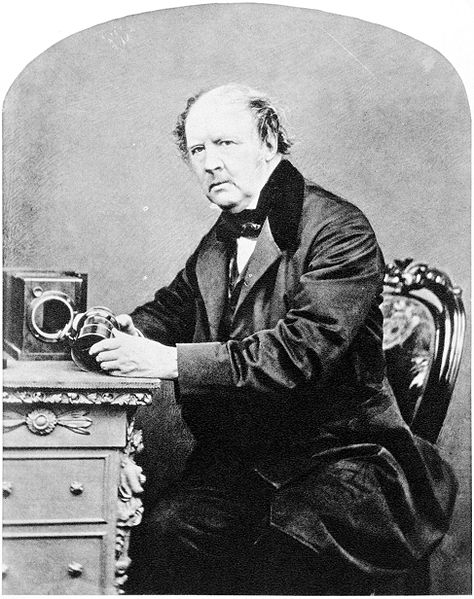
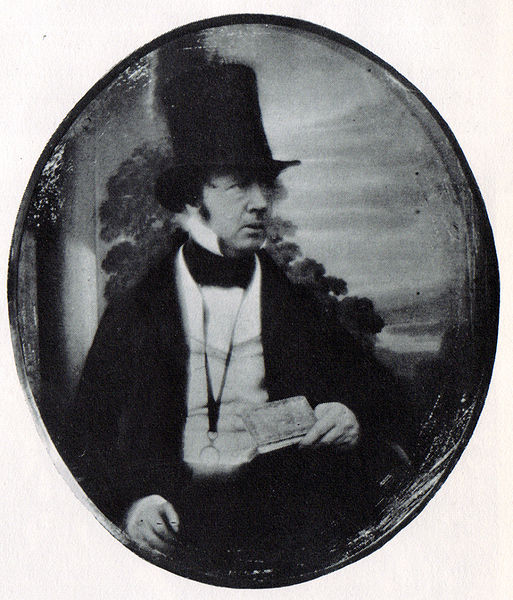
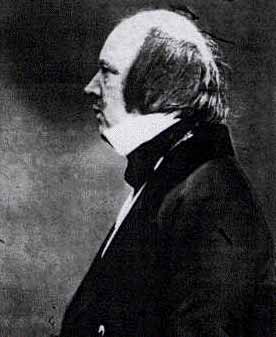
William Henry Fox Talbot (11 February 1800 – 17 September 1877) was a British inventor and a pioneer of photography. He was the inventor of calotype process, the precursor to most photographic processes of the 19th and 20th centuries. He was also a noted photographer who made major contributions to the development of photography as an artistic medium. His work in the 1840s on photo - mechanical reproduction led to the creation of the photoglyphic engraving process, the precursor to photogravure. Talbot is also remembered as the holder of a patent which, some say, affected the early development of commercial photography in Britain. Additionally, he made some important early photographs of Oxford, Paris and York.
Talbot was known by his second name Henry, rather than William. It is commonly assumed that "Fox Talbot" is an unhyphenated double - barrelled surname. However, Fox was his mother's maiden name and was not passed on to his children. Some historians have therefore argued that he should be referred to as "Talbot" rather than "Fox Talbot". Nevertheless, although he signed his name as "H.F. Talbot" as well as "H. Fox Talbot", he was most often referred to by his contemporaries, including his mother, as "Mr Fox Talbot" or "Mr H Fox Talbot". "H Fox Talbot" was also the style he chose for his most important publications, including The Pencil of Nature.
Talbot was the only child of William Davenport Talbot, of Lacock Abbey, near Chippenham, Wiltshire, and of Lady Elisabeth Fox Strangways, daughter of the 2nd Earl of Ilchester. Talbot was educated at Rottingdean, Harrow School and at Trinity College, Cambridge, where he was awarded the Porson prize in Classics in 1820, and graduated as twelfth wrangler in 1821. From 1822 to 1872, he frequently communicated papers to the Royal Society, many of them on mathematical subjects. At an early period, he had begun his optical researches, which were to have such important results in connection with photography. To the Edinburgh Journal of Science in 1826 he contributed a paper on "Some Experiments on Coloured Flame"; to the Quarterly Journal of Science in 1827 a paper on "Monochromatic Light"; and to the Philosophical Magazine a number of papers on chemical subjects, including one on "Chemical Changes of Colour."
Talbot said he engaged his photographic experiments beginning in early 1834, well before 1839, when Louis Daguerre
exhibited his pictures taken by the sun. After Daguerre's discovery was
announced (without details), Talbot showed his five year old pictures
at the Royal Institution on 25 January 1839. Within a fortnight, he freely communicated the technical details of his photogenic drawing
process to the Royal Society. Daguerre would not reveal the
manipulatory details of his process until August. In 1841, Talbot
announced his discovery of the calotype, or talbotype, process. This process reflected the work of many predecessors, most notably John Herschel and Thomas Wedgwood.
In August 1841, Talbot licensed Henry Collen,
the miniature painter (1798 - 1879) as the first professional
calotypist.
Talbot's original contributions included the concept of a negative from
which many positive prints can be made (although the terms negative and positive
were coined by Herschel), and the use of gallic acid for developing the
latent image. In 1842, for his photographic discoveries, which are
detailed in his The Pencil of Nature (1844), he received the Rumford Medal of the Royal Society.
The work on the Daguerre process was taking place at the same time as
that of William Fox Talbot in England on the calotype process. To
protect his own invention, Daguerre had to register himself the patent
for Britain. French government pensioned him to set his invention free
to the world (even when William Fox Talbot was selling illegal licenses
to British photographers where it was used instead of the
Daguerreotype).
In February 1841, Talbot obtained a patent for the calotype process. At first, he was selling individual patent licenses for £20 each, but later he lowered the fee to £4 and waived the payment for those who wished to use the process only as amateurs. Professional photographers, however, had to pay up to £300 annually. In a business climate where many patent holders were attacked for enforcing their rights, Talbot's behavior was widely criticized, especially after 1851 when Frederick Scott Archer publicized the collodion process he had invented. Talbot declared that anyone using Archer's process would still be liable to get a license from Talbot for calotype (Archer himself never obtained a patent for collodion).
One reason Talbot patented the calotype was that he had spent many thousands of pounds (then a fortune) on the development of the calotype process over several years. It is also significant that, although the daguerreotype process was supposed to be free to the world, Daguerre secured a British patent on his own process making it illegal for people in Britain to practice his process without a license. The purpose behind this patenting in Britain is not clear, but perhaps it was to stop Talbot from claiming priority or developing his system against Daguerre. Talbot's negative / positive process eventually succeeded as the basis for almost all 19th and 20th century photography. The daguerreotype, although stunningly beautiful, was rarely used by photographers after 1860, and had died as a commercial process by 1865.
One person who tried to use the daguerreotype as a method of reproduction without Talbot's process was the English soldier, geologist, inventor and photographer Levett Landon Boscawen Ibbetson. But as good as Ibbetson's attempts were at producing something like a lithograph from the original daguerreotype, the end result could not compete with Talbot's process. They were simply too expensive. Ibbetson began experimenting with Talbot's calotype, and in 1842 wrote to Talbot "I have been going on with experiments in the Callotype & have had some very good results as to depth of Colour." By 1852, Capt. Ibbetson was showing his book using the Talbot calotype process, called "Le Premier Livre Imprimè par le Soleil" at a London Society of Arts exhibition.
The calotype was a refinement of his earlier photogenic drawing
process in the use of a developing agent (gallic acid and silver
nitrate) to bring out a latent negative image on the exposed paper. The
negative meant that the print could be reproduced as many times as was
required. The daguerreotype
was a direct positive process and not reproducible, just as a Polaroid
color photograph where a copy has to be made. On the other hand, the
calotype, despite waxing of the negative paper to make the image
clearer, still was not pin sharp like the metallic daguerreotype as the
paper fibers degraded the image produced.
The problem was resolved in 1851 (the year of Daguerre's death) when the wet collodion process enabled glass to be used as a support, the lack of detail often found in calotype negatives was removed and pin sharp images, similar in detail to the daguerreotype were created. The wet collodion negative not only brought about the end of the calotype in commercial use, but also spelled the end of the daguerreotype as a common process for portraiture.
In August 1852, The Times published an open letter by Lord Rosse, the President of the Royal Society, and Charles Lock Eastlake, the president of the Royal Academy, who called on Talbot to relieve his patent pressure that was perceived as stifling the development of photography. In his response, Talbot agreed to waive licensing fees for amateurs, but he continued to pursue professional portrait photographers, having filed several lawsuits. The cost of the license for anyone wishing to make portraits for sale was £100 for the first year and £150 each subsequent year.
In 1854, Talbot applied for an extension of the 14 year patent, to be
expired in 1855. At that time one of his lawsuits, against a
photographer Martin Laroche, was heard by the court. The Talbot v. Laroche
case was the pivotal point of the story. Laroche's side argued that the
patent was invalid, as a similar process was invented earlier by Joseph Reade,
and that using the collodion process does not infringe the calotype
patent anyway because of significant differences between the two
processes. In the verdict, the jury upheld the calotype patent but
agreed that Laroche was not infringing upon it by using the collodion
process. Disappointed by the outcome, Talbot chose not to extend his
patent.
Talbot was active in politics, being a moderate Reformer who generally supported the Whig Ministers. He served as Member of Parliament for Chippenham between 1832 and 1835 when he retired from Parliament. He also held the office of High Sheriff of Wiltshire in 1840.
Whilst engaged in his scientific researches, he devoted much time to archaeology. He published Hermes, or Classical and Antiquarian Researches (1838 - 39), and Illustrations of the Antiquity of the Book of Genesis (1839). With Sir Henry Rawlinson and Dr Edward Hincks he shares the honor of having been one of the first decipherers of the cuneiform inscriptions of Nineveh. He was also the author of English Etymologies (1846).
In 1843 - 44, he set up an establishment in Baker Street, Reading, for the purpose of mass producing salted paper prints from his calotype negatives. The Reading Establishment (as it was known) also produced prints from other calotypist’s negatives and even produced portraits and copy prints at the studio.
He died in Lacock village aged 77, and is buried along with his wife and children in the churchyard there.
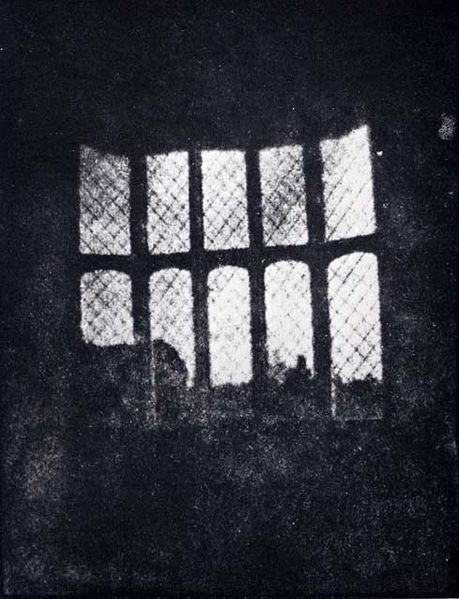
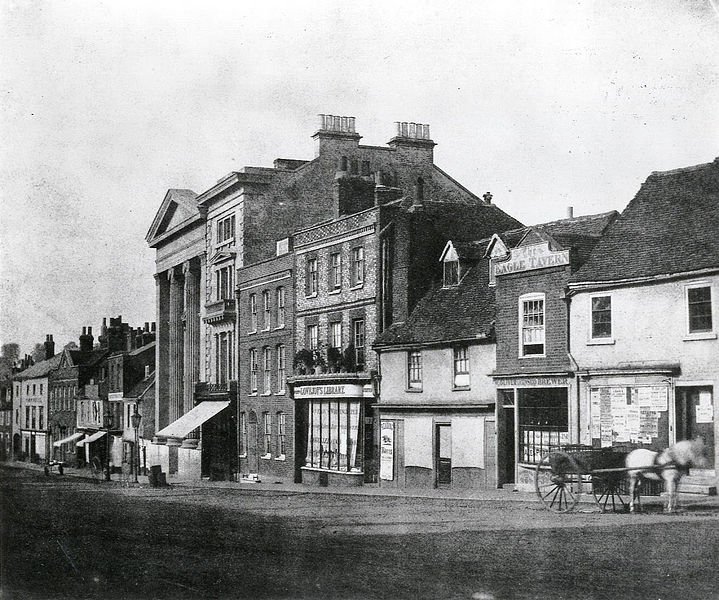
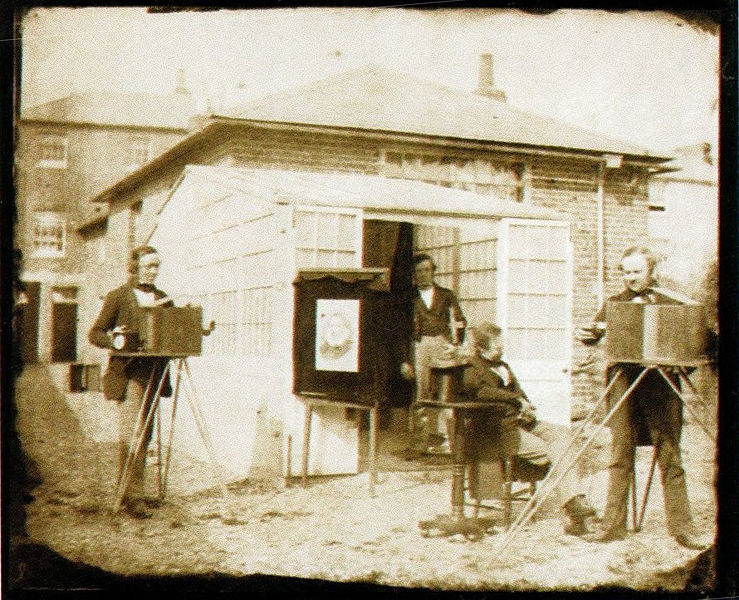
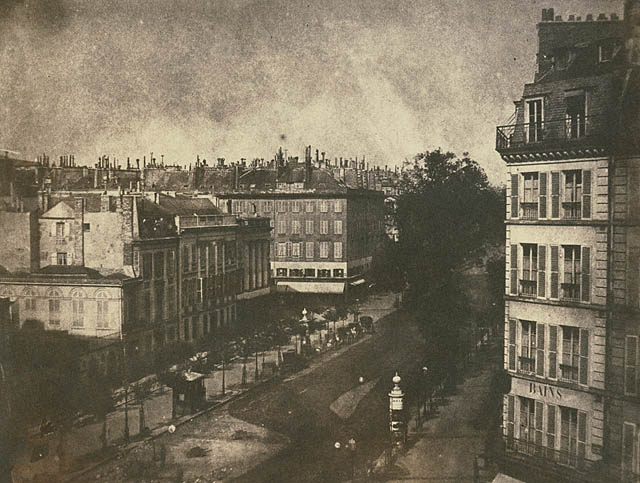
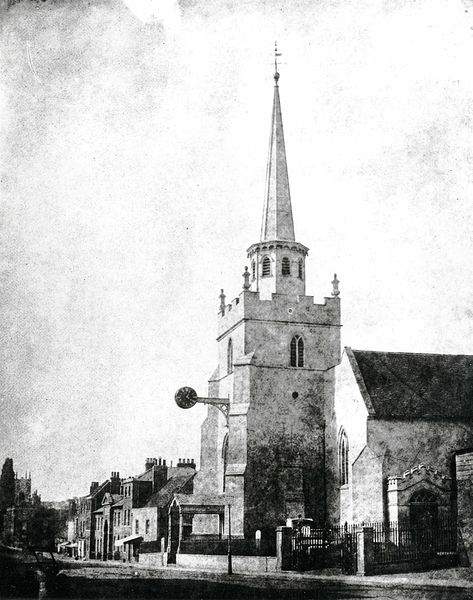
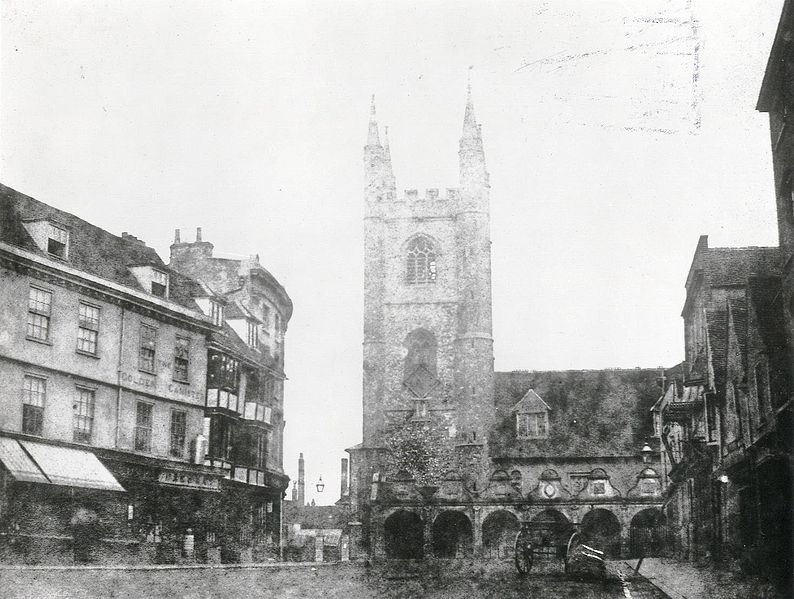
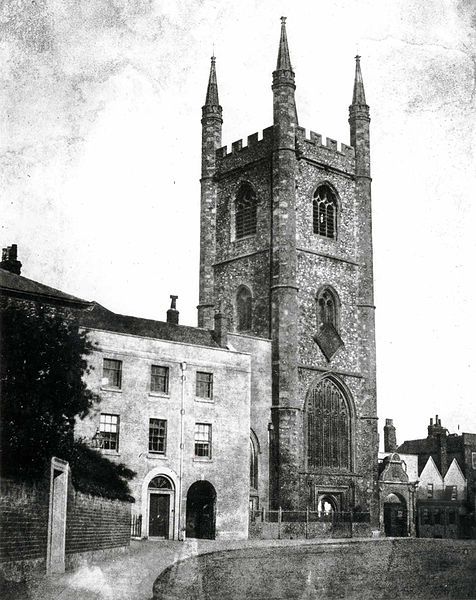
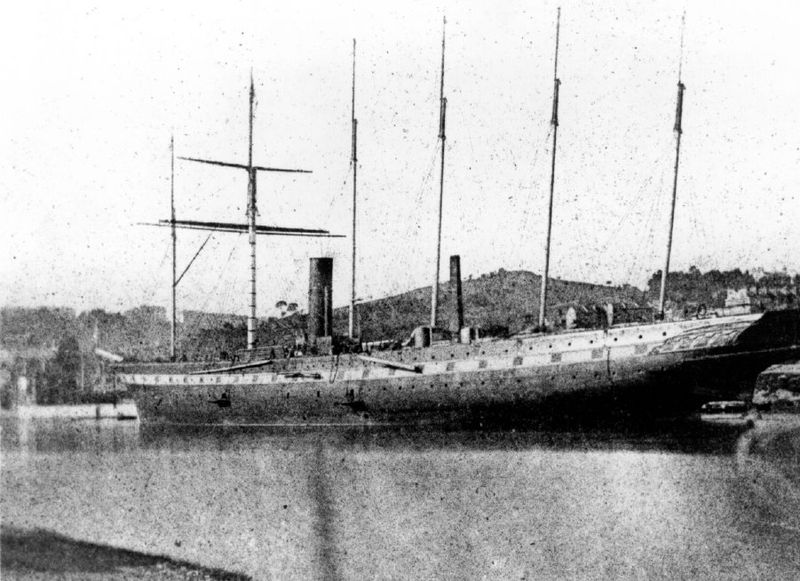
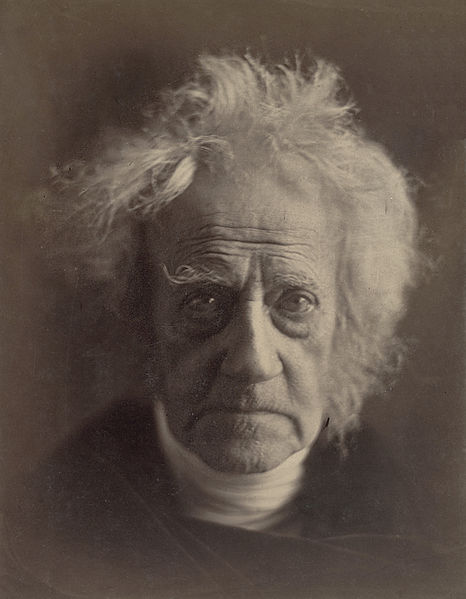
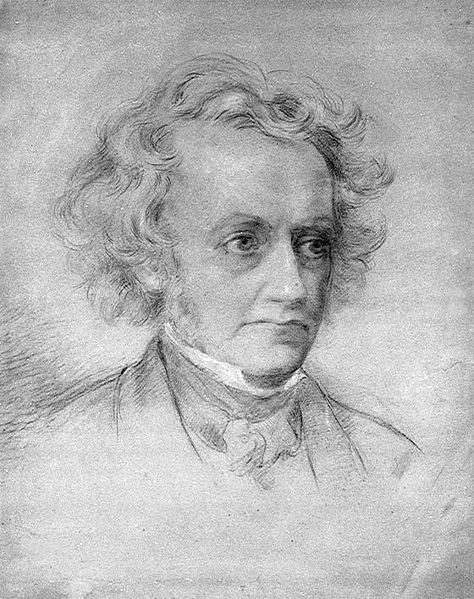
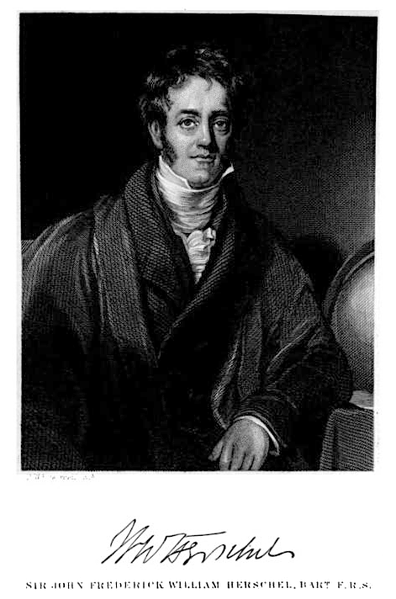
Sir John Frederick William Herschel, 1st Baronet KH, FRS (7 March 1792 – 11 May 1871), was an English mathematician, astronomer, chemist and experimental photographer / inventor, who in some years also did valuable botanical work. He was the son of Mary Baldwin and astronomer Sir William Herschel and the father of 12 children.
Herschel originated the use of the Julian day system in astronomy. He
named seven moons of Saturn and four moons of Uranus. He made many
contributions to the science of photography, and investigated color blindness and the chemical power of ultraviolet rays.
Herschel was born in Slough, Berkshire, and studied shortly at Eton College and St John's College, Cambridge. He graduated as Senior wrangler in 1813. It was during his time as an undergraduate that he became friends with Charles Babbage and George Peacock. He took up astronomy in 1816, building a reflecting telescope with a mirror 18 inches (460 mm) in diameter and with a 20 foot (6.1 m) focal length. Between 1821 and 1823 he re-examined, with James South, the double stars cataloged by his father. For this work he was presented in 1826 with the Gold Medal of the Royal Astronomical Society (which he won again in 1836), and with the Lalande Medal of the French Academy of Sciences in 1825, while in 1821 the Royal Society bestowed upon him the Copley Medal for his mathematical contributions to their Transactions. Herschel was made a Knight of the Royal Guelphic Order in 1831.
His A preliminary discourse on the study of natural philosophy published early in 1831 as part of Dionysius Lardner's Cabinet cyclopædia set out methods of scientific investigation with an orderly relationship between observation and theorizing. He described nature as being governed by laws which were difficult to discern or to state mathematically, and the highest aim of natural philosophy was understanding these laws through inductive reasoning, finding a single unifying explanation for a phenomenon. This became an authoritative statement with wide influence on science, particularly at the University of Cambridge where it inspired the student Charles Darwin with "a burning zeal" to contribute to this work.
He published a catalog of his astronomical observations in 1864, as the General Catalogue of Nebulae and Clusters, a compilation of his own work and that of his father's, expanding on the senior Hershel's Catalogue of Nebulae. A further complementary volume was published posthumously, as the General Catalogue of 10,300 Multiple and Double Stars.
Declining an offer from the Duke of Sussex that they travel to South Africa on a Navy ship, Herschel and his wife paid £500 for passage on the S.S. Mountstuart Elphinstone, a ship of 611 tons, which departed from Portsmouth on 13 November 1833. The voyage to South Africa was made in order to catalog the stars, nebulae, and other objects of the southern skies. This was to be a completion as well as extension of the survey of the northern heavens undertaken initially by his father William Herschel. He arrived in Cape Town on 15 January 1834 and set up a private 21 ft (6.4 m) telescope at Feldhausen at Wynberg. Amongst his other observations during this time was that of the return of Comet Halley. Herschel collaborated with Thomas Maclear, the Astronomer Royal at the Cape of Good Hope, and the two families became close friends.
However, in addition to his astronomical work, this voyage to a far corner of the British empire also gave Herschel an escape from the pressures under which he found himself in London, where he was one of the most sought after of all British men of science. While in southern Africa, he engaged in a broad variety of scientific pursuits free from a sense of strong obligations to a larger scientific community. It was, he later recalled, probably the happiest time in his life. In an extraordinary departure from astronomy, he combined his talents with those of his wife, Margaret, and between 1834 and 1838 they produced 131 botanical illustrations of fine quality, showing the Cape flora. John Herschel used a camera lucida to obtain accurate outlines of the specimens and left the details to his wife. Even though their portfolio had been intended as a personal record, and despite the lack of floral dissections in the paintings, their accurate rendition makes them more valuable than contemporary collections. Some 112 of the 132 known flower studies were collected and published as "Flora Herscheliana" in 1996.
As their home during their stay in the Cape, they had selected 'Feldhausen', an old estate on the south - east side of Table Mountain. Here he set up his reflector to begin his survey of the southern skies. Intrigued by the ideas of gradual formation of landscapes set out in Charles Lyell's Principles of Geology, he wrote to Lyell on 20 February 1836 praising the book as a work which would bring "a complete revolution in [its] subject, by altering entirely the point of view in which it must thenceforward be contemplated." and opening a way for bold speculation on "that mystery of mysteries, the replacement of extinct species by others." Herschel himself thought catastrophic extinction and renewal "an inadequate conception of the Creator", and by analogy with other intermediate causes "the origination of fresh species, could it ever come under our cognizance, would be found to be a natural in contradistinction to a miraculous process". He prefaced his words with the couplet:
- He that on such quest would go must know not fear or failing
- To coward soul or faithless heart the search were unavailing.
Taking a gradualist view of development and referring to the evolution of language, he commented
- "Words are to the Anthropologist what rolled pebbles are to the Geologist — battered relics of past ages often containing within them indelible records capable of intelligent interpretation — and when we see what amount of change 2000 years has been able to produce in the languages of Greece & Italy or 1000 in those of Germany France & Spain we naturally begin to ask how long a period must have lapsed since the Chinese, the Hebrew, the Delaware & the Malesass [Malagasy] had a point in common with the German & Italian & each other — Time! Time! Time! — we must not impugn the Scripture Chronology, but we must interpret it in accordance with whatever shall appear on fair enquiry to be the truth for there cannot be two truths. And really there is scope enough: for the lives of the Patriarchs may as reasonably be extended to 5000 or 50000 years apiece as the days of Creation to as many thousand millions of years."
The document was circulated, and Charles Babbage incorporated extracts in his ninth and unofficial Bridgewater Treatise, which postulated laws set up by a divine programmer. When HMS Beagle called at Cape Town, Captain Robert FitzRoy and the young naturalist Charles Darwin visited Herschel on 3 June 1836. Later on, Darwin would be influenced by Herschel's writings in developing his theory advanced in The Origin of Species. In the opening lines of that work, Darwin writes that his intent is "to throw some light on the origin of species — that mystery of mysteries, as it has been called by one of our greatest philosophers", referring to Herschel.
Herschel returned to England in 1838, was created a baronet, of Slough in the County of Buckingham, and published Results of Astronomical Observations made at the Cape of Good Hope
in 1847. In this publication he proposed the names still used today for
the seven then known satellites of Saturn: Mimas, Enceladus, Tethys,
Dione, Rhea, Titan, and Iapetus.
In the same year, Herschel received his second Copley Medal from the
Royal Society for this work. A few years later, in 1852, he proposed the
names still used today for the four then known satellites of Uranus: Ariel, Umbriel, Titania, and Oberon.
Herschel made numerous important contributions to photography. He made improvements in photographic processes, particularly in inventing the cyanotype process and variations (such as the chrysotype), the precursors of the modern blueprint process. He experimented with color reproduction, noting that rays of different parts of the spectrum tended to impart their own color to a photographic paper. He collaborated in the early 1840s with Henry Collen, portrait painter to Queen Victoria. Herschel originally discovered the platinum process on the basis of the light sensitivity of platinum salts, later developed by William Willis.
Unaware that the term photography had already been coined by Hercules Florence in 1834, Herschel also coined the term in 1839. He applied the terms negative and positive to photography.
He discovered sodium thiosulfate to be a solvent of silver halides in 1819, and informed Talbot and Daguerre of his discovery that this "hyposulphite of soda" ("hypo") could be used as a photographic fixer,
to "fix" pictures and make them permanent, after experimentally
applying it thus in early 1839. His ground breaking research on the
subject was read at the Royal Society in London in March 1839 and
January 1840.
Herschel wrote many papers and articles, including entries on meteorology, physical geography and the telescope for the eighth edition of the Encyclopædia Britannica. He also translated The Iliad of Homer.
He invented the actinometer in 1825 to measure the direct heating power of the sun's rays, and his work with the instrument is of great importance in the early history of photochemistry.
He proposed a correction to the Gregorian calendar, making years that are multiples of 4000 not leap years, thus reducing the average length of the calendar year from 365.2425 days to 365.24225. Although this is closer to the mean tropical year of 365.24219 days, his proposal has never been adopted because the Gregorian calendar is based on the mean time between vernal equinoxes (currently 365.2424 days).
In 1836, he was elected a foreign member of the Royal Swedish Academy of Sciences.
In 1835, the New York Sun newspaper wrote a series of satiric articles that came to be known as the Great Moon Hoax, with statements falsely attributed to Herschel about his supposed discoveries of animals living on the Moon, including batlike winged humanoids.
The village of Herschel in western Saskatchewan (Canada), Mount Herschel (Antarctica), the crater J. Herschel on the Moon, and the Herschel Girls School in Cape Town (South Africa), are all named after him. While it is commonly accepted that Herschel Island (in the Arctic Ocean, part of the Yukon Territory) was named after him, the entries in the expedition journal of Sir John Franklin state that the latter wished to honor the Herschel name, about which John Herschel’s father (Sir William Herschel) and his aunt (Caroline Herschel) constitute two other notable members of this family.